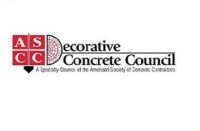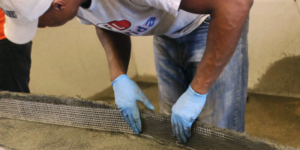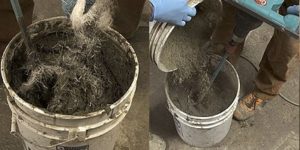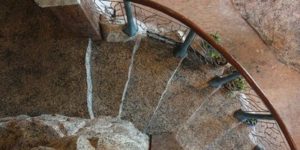Glass-fiber reinforced concrete became a commercially viable material in the early 1970s with the advent of commercially available alkali-resistant glass fibers. GFRC would allow larger, thinner, more intricate architectural panels and details to be made, replacing conventional full-thickness precast units or stone and masonry elements. But it would take another decade or two before it became an economically attractive and faster alternative to the heavy and expensive materials traditionally used in commercial buildings.
Polymer was not part of the original GFRC formulation. GFRC often was simply a blend of fine sand, portland cement, water and glass fibers. Wet curing was critically important in order for the large panels to achieve their strength before installation and remain dimensionally accurate. Premature drying can lead to shrinkage and curling, a problem exacerbated in cement-rich concrete cast in large, thin sections.
To become strong panels that would remain true to shape, the large building panels had to be wet-cured in large curing rooms, where they were stacked and stored for a week at a time. It’s not uncommon for a large plant to make a few thousand square feet of GFRC per day, so the curing rooms had to be large enough to accommodate this voluminous throughput.
Commercial GFRC includes a very wide variety of products and applications, including building facade panels, planters, tiles and fireplace surrounds, but multistory building panels were what forced many factories to build warehouse-sized curing rooms to produce strong, durable products. Naturally this increased the manufacturers’ overhead substantially, raising the per-square-foot cost of GFRC.
Polymer was introduced in the United States to overcome the severe economic impact imposed by the necessary and expensive seven-day wet cure. Studies performed in the 1980s and 1990s established the type and amount of polymer that would allow the GFRC to be stored in the open air after it was demolded. GFRC thus produced would retain enough internal moisture that its strength after being air-cured for seven days was equivalent to the strength it would have if it was wet-cured for seven days.
Even though polymer is an expensive additive, using it made GFRC economically feasible, because it eliminated the need for large curing rooms (and the overhead associated with building and maintaining them). Now large panels could be cast, cured under plastic overnight, and then demolded. They were subsequently stored outdoors in open-air lots, all without compromising strength or dimensional tolerances.
The adoption of polymer as a curing aid helped reduce the manufacturing costs of GFRC, making it economically attractive to produce, specify and use. In addition, the polymer helps the GFRC retain its integrity, high strength and flexibility for many decades, even when exposed to harsh environmental conditions.
The polymer used in commercial GFRC is a liquid acrylic copolymer emulsion that contains defoamers and other proprietary additives that aid in producing architectural-grade concrete with a high-quality surface finish. The polymer is UV-stable, unaffected by alkalinity, and conforms to the Precast/Prestressed Concrete Institute’s PCI MNL 130, Quality Control Manual, 2nd edition, Appendix G for curing admixtures used in GFRC.














